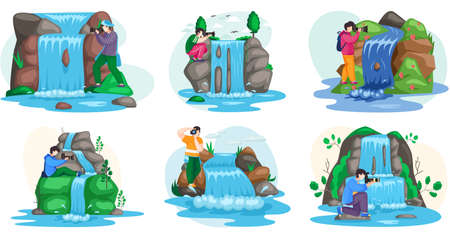Introduction to National Trust Rangers
The United Kingdom is home to some of the most breathtaking and diverse landscapes in Europe, from rugged coastlines to ancient woodlands. At the heart of safeguarding these treasured environments are the National Trust rangers—dedicated professionals whose work ensures that our natural heritage remains vibrant for generations to come. As conservationists, National Trust rangers play a pivotal role in managing habitats, protecting rare species, and promoting biodiversity across vast estates and nature reserves. Their responsibilities extend beyond routine maintenance; they conduct wildlife surveys, lead conservation projects, and engage local communities in environmental stewardship. Through their expertise and passion, these rangers not only preserve vital ecosystems but also inspire visitors to connect with nature through guided walks and educational experiences. This series will introduce you to several National Trust rangers and highlight their favourite wildlife walks, offering a unique glimpse into both their daily challenges and the spectacular sites they help protect.
A Day in the Life of a Conservation Ranger
National Trust rangers form the backbone of conservation efforts across the UK, and their daily routine is as diverse as the landscapes they protect. Each day brings a unique blend of responsibilities, from habitat management to engaging with visitors, all while navigating the unpredictable British weather. Below is an insight into what a typical day might look like for a National Trust ranger:
| Time | Activity | Key Skills Involved |
|---|---|---|
| 07:30 | Site inspection and safety checks | Attention to detail, risk assessment |
| 09:00 | Habitat management (e.g., clearing invasive species, monitoring wildlife) | Ecological knowledge, physical fitness |
| 11:00 | Leading guided walks or school groups | Communication, education, public engagement |
| 13:00 | Liaising with volunteers and local communities | Teamwork, relationship building |
| 15:00 | Responding to visitor queries and incidents | Problem-solving, first aid awareness |
| 16:30 | Recording data and planning for tomorrow’s tasks | Organisation, IT skills, long-term vision |
Tackling Daily Challenges and Embracing Rewards
The challenges rangers face are as varied as the British countryside itself. Adapting to shifting priorities—be it storm damage after a night of gales or unexpected wildlife sightings—demands resilience and quick thinking. Balancing conservation needs with public access is a constant consideration, requiring thoughtful decision-making and effective communication.
The Most Rewarding Moments on the Job
Despite these challenges, rangers often cite the sense of achievement that comes from seeing positive changes in habitats or inspiring young people during educational visits. Whether it’s the return of a once-rare species or the gratitude expressed by visitors enjoying a well-maintained path, these moments underscore the vital impact of their work. Every ranger has stories of encounters with iconic British wildlife—from red squirrels in Cumbria to Dartford warblers on the South Downs—reminding them daily why they are so passionate about their role.

3. Favourite Wildlife Walks: Rangers’ Personal Picks
Across the United Kingdom, National Trust rangers have developed a profound connection to the landscapes they protect. Each ranger brings a wealth of experience and a unique perspective to their favourite wildlife walks—routes they personally cherish for their ecological richness and tranquil beauty. From ancient woodlands in Kent to windswept coastal paths in Cornwall, these professionals are eager to share insights into trails that often remain undiscovered by the wider public.
Unique Habitats
Rangers frequently highlight walks that traverse distinctive habitats, such as heathlands alive with rare orchids, secluded wetlands echoing with bird song, or wildflower meadows buzzing with pollinators. For example, the chalk grasslands of the South Downs host butterflies like the Adonis blue, while the mossy woodlands of the Lake District offer glimpses of elusive red squirrels—a true conservation success story.
Seasonal Spectacles
Timing is everything on these trails. In spring, bluebell carpets transform shaded glades into a sea of colour; autumn brings rutting deer to ancient parks like Richmond or Knole. Rangers recommend early morning or dusk excursions for witnessing shy wildlife, particularly during migration periods when rare birds arrive along coastal reserves such as Blakeney Point.
Lesser-Known Trails
While popular sites draw crowds, rangers often favour quieter paths where nature thrives undisturbed. The meandering footpaths through Yorkshire’s hidden dales or the remote headlands of Pembrokeshire offer solitude and exceptional biodiversity. Conservationists encourage visitors to tread lightly and respect these sensitive environments—many maintained by local volunteers alongside dedicated rangers.
By sharing their personal favourites, National Trust rangers invite walkers to deepen their appreciation for Britain’s diverse wildlife and foster a sense of stewardship for future generations. Whether you seek dramatic landscapes or peaceful encounters with nature, following in their footsteps promises both adventure and inspiration.
4. Wildlife Encounters: Notable Species and Spotting Tips
Exploring the British countryside under the guidance of National Trust rangers offers an unparalleled opportunity to witness some of the UK’s most iconic wildlife. From ancient woodlands to windswept coastlines, these conservationists share their expertise on where and when to encounter a diverse array of species. Below, we highlight key wildlife to look out for during your walks, along with practical advice from rangers on making your experience truly memorable.
Iconic British Wildlife to Watch For
| Species | Typical Habitat | Best Time to Spot |
|---|---|---|
| Red Squirrel | Mature woodlands in Cumbria and Northumberland | Early morning, spring and autumn |
| Kingfisher | Rivers and lakes across southern England | Dawn or dusk, summer months |
| Barn Owl | Farmland edges and open grassland in East Anglia | Dusk, all year round but especially autumn |
| Grey Seal | Coastal areas such as Blakeney Point and Farne Islands | Low tide, pupping season (autumn-winter) |
| Adonis Blue Butterfly | Limestone grasslands in the South Downs | Sunny days, late May to early June and August |
Rangers’ Practical Spotting Tips
- Timing is Everything: Early mornings or late evenings are often best for spotting shy mammals like deer or foxes, while midday warmth draws out butterflies and insects.
- Tread Lightly: Move quietly and stay downwind when possible; many animals rely on keen hearing and scent detection.
- Patience Pays Off: Find a comfortable spot near water sources or feeding grounds—rangers recommend settling in for at least 20 minutes before moving on.
The Role of Conservation Work in Wildlife Sightings
The habitat management carried out by National Trust rangers directly influences the abundance and diversity of wildlife. For example, regular coppicing in woodlands encourages growth that supports dormice populations, while coastal clean-ups ensure safe breeding grounds for seals. By joining guided walks or volunteering days, visitors not only enhance their chances of unique sightings but also contribute actively to conservation efforts.
5. Inspiring the Next Generation: Community and Volunteer Engagement
The National Trust rangers play a pivotal role in nurturing a culture of conservation across the United Kingdom by actively engaging local communities, schools, and volunteers. Their efforts go far beyond routine land management; they are dedicated to inspiring people from all walks of life to connect with nature and become stewards of the countryside.
Building Relationships with Local Communities
Rangers serve as a vital link between the Trust’s landscapes and the communities that surround them. Through regular outreach events—such as guided wildlife walks, seasonal fairs, and open days—they invite residents to experience the unique beauty and ecological importance of their local areas. These initiatives not only foster a sense of pride but also empower individuals to contribute directly to conservation projects, reinforcing the bond between people and place.
Educational Partnerships with Schools
Recognising that future conservation relies on today’s young minds, rangers collaborate closely with schools throughout the UK. They design curriculum-linked outdoor learning sessions, host field trips, and deliver interactive talks that bring classroom topics to life amidst woodlands, wetlands, and meadows. By sparking curiosity and wonder in children, rangers lay the groundwork for lifelong environmental responsibility.
Empowering Volunteers: Hands-on Conservation
The Trust’s volunteer programmes offer practical opportunities for individuals to make a tangible difference. Under ranger guidance, volunteers participate in a range of activities—from habitat restoration and invasive species control to wildlife surveys and visitor engagement. Many rangers remark on how these experiences not only benefit nature but also forge lasting friendships and instil a shared sense of achievement within the community.
A Lasting Legacy
Through their commitment to public engagement, National Trust rangers are cultivating a new generation of conservationists who value Britain’s natural heritage. Their leadership ensures that everyone—regardless of age or background—can play an active part in safeguarding wild places for years to come.
6. Looking Forward: Challenges and Hopes for the Future
The National Trust rangers are at the forefront of tackling some of the most pressing environmental challenges facing the UK’s treasured landscapes. As custodians of diverse habitats—from ancient woodlands and windswept moors to chalk grasslands and rugged coastlines—they are acutely aware of the threats posed by climate change, invasive species, habitat loss, and increased visitor pressure. Their frontline experience provides unique insight into how these challenges manifest on a daily basis and what is needed to secure a resilient future for both wildlife and people.
Addressing Climate Change Impacts
Climate change remains a significant concern for rangers across the country. Shifting weather patterns and extreme events have altered the delicate balance within many ecosystems, impacting everything from bird migration timings to the health of native plant communities. Rangers are working collaboratively with ecologists and volunteers to monitor these changes, adapt management strategies, and trial innovative solutions such as natural flood management and carbon sequestration projects.
Combating Habitat Loss and Fragmentation
Habitat loss—whether from development, pollution or historical land use—continues to threaten biodiversity. Many rangers are focused on restoring degraded areas, reconnecting fragmented habitats through wildlife corridors, and encouraging traditional land management practices that benefit nature. Through targeted grazing, scrub clearance, and rewilding projects, they aim to enhance resilience and support threatened species.
Engaging Communities for Lasting Change
Sustainable stewardship relies heavily on community engagement. Rangers emphasise the importance of involving local people in conservation work, whether through volunteering, educational programmes or citizen science initiatives. Building public understanding fosters a shared sense of responsibility for safeguarding these special places.
Aspirations for Sustainable Futures
Looking ahead, rangers express hope for increased collaboration between landowners, policymakers, scientists, and the public. They aspire to see greater investment in nature-friendly farming, robust protection for designated sites, and long-term funding for conservation initiatives. By sharing their passion for wildlife walks and connecting more visitors with nature’s wonders, rangers believe it is possible to inspire future generations to cherish and defend Britain’s irreplaceable natural heritage.


